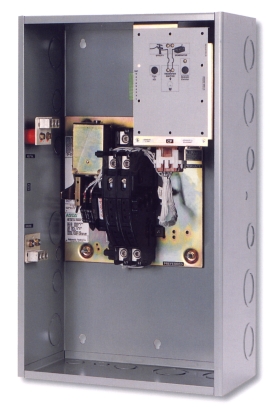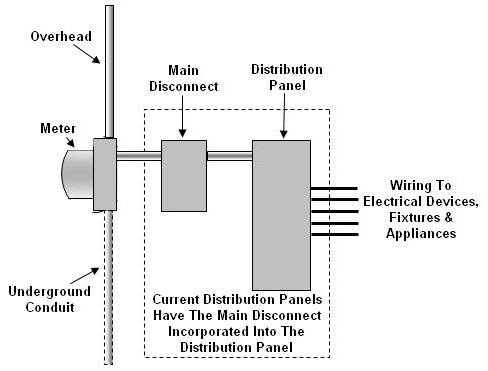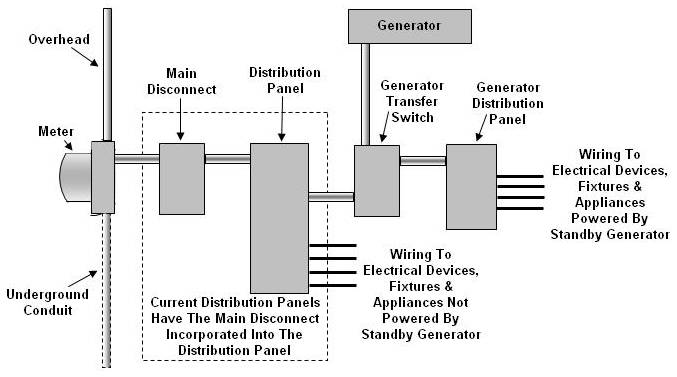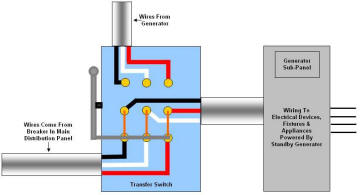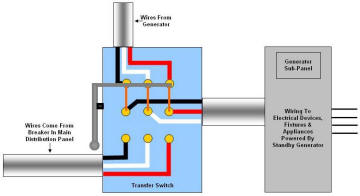Wiring A Generator Transfer Switch & Distribution Sub-Panel
If you are installing a standby generator in order to have some electrical power to your home in the event of a utility power outage, it is important that you understand how to properly install a transfer switch.
Figure 1 - Generator transfer switch.
The transfer switch is the device that transfers the power from the utilities power to the standby generators power, as shown in Figure 1.
Very few homeowners can afford or consider it necessary to supply power to all of the homes electrical devices, fixtures and appliances in the event of a power failure. Because the generator chosen can only supply power to a limited number of items, it is necessary to decide which circuits will be powered by the standby generator in the event of a utility power outage.
There are two methods to perform the transfer:
- Manual
- Automatic
In each case, manual or automatic transfer the circuitry is the same. In the case of the manual transfer switch, it requires that someone recognizes that the utility power has failed and must intervene to start the generator and then transfer the desired circuits to the generators power output. A manual transfer switch does not operate if there is no one at home.
In the case of an automatic transfer switch (ATS), the switch has the intelligence to sense when the utility is no longer delivering power and automatically starting the generator and then transferring the circuits to the generator. The automatic transfer switch also recognizes when the utility power is back online, transfers the circuits back to the utility and turns the generator off.
A basic home electrical service looks like this (grounding circuits and wires have been left out in order to make the drawings less cluttered):
The meter is fed from the utility via an overhead or underground conduit as shown in Figure 2. The electrical service main disconnect and electrical distribution panel are shown as 2 separate items, however newer circuit breaker distribution panels have the main disconnect located at the top of the electrical distribution panel (large circuit breaker).
Figure 2 - Home electrical service before the installation of a standby generator and transfer switch.
Adding a standby generator into your electrical service system, as shown in Figure 3:
Figure 3 - Standby generator and transfer switch installed in a home electrical service.
The circuits that you want to be powered by both the electrical utility and the standby generator are transferred to the generator electrical distribution panel. The generators electrical distribution panel should be fed from a double (2-pole) breaker in the main distribution panel.
Simplified inner workings of the transfer switch are shown in Figures 4 and 5. For clarity have been shown with a manual lever. If you have an automatic transfer switch the electrical switching function works in the same manner as the manual switch:
Figure 4 - Wiring Diagram Of A Manual Transfer Switch In The "Off" Position.
Figure 5 - Wiring Diagram Of A Manual Transfer Switch In The "ON" Position.
The drawings also show the switching of the neutral wire (white).
Many systems do not switch the neutral wire and tie the three neutral wires together. Verify the method of wiring with your transfer switch and generator before installation.
When utility power is functioning the wires from the circuit breaker in the main electrical distribution panel are connected to the generator sub-panel. If utility power fails, the switch connects the generator's power to the circuits in the generator sub-panel.
